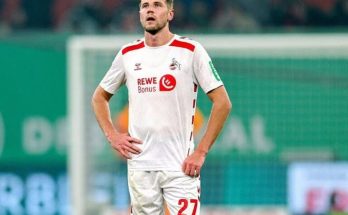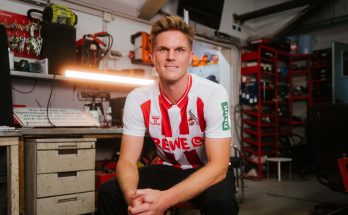In the first days of the 2025–26 season, Borussia Dortmund’s supporters were jolted by headlines: their summer signing Fábio Silva, just acquired in a high‑profile move from Wolves, was not ready to walk straight into the team. Instead, he faced a rehab battle after an adductor surgery, casting uncertainty over when—if ever—his Dortmund debut would arrive. By late September, though, whispers turned into expectation: Silva was edging closer. The arc from injury to comeback is often steep for footballers, but for Silva it has become a test of patience, faith, and resilience.
When Dortmund confirmed Silva’s arrival on August 29, the optimism was palpable. The Portuguese forward, only 23 years old, signed a long-term contract until 2030, and the initial fee was reported at €22.5 million.His track record in recent seasons had been mixed—plenty of loan spells, flashes of promise, but also spells on the sidelines. His season with Las Palmas in La Liga had revived his reputation, as he netted 10 goals in 24 appearances. Dortmund believed in his potential enough to push forward even when the medical side revealed complications.
What complicates Silva’s story is that the adductor issue only came fully into view at the medical stage. Reports suggest that during the mandatory medical, Dortmund discovered he had recently undergone adductor surgery. The club insists they were aware of his condition prior to finalizing the transfer. In a press conference, coach Niko Kovač stated, “He was not signed injured. He had surgery and we were fully aware that the boy would be back quickly.”Still, many question whether the full extent of the injury was understood until later. The fact that Dortmund pressed ahead with the signing regardless underscores both their belief in his talent and the risk they were willing to take.
The injury itself—and its timing—is a delicate blow for a striker joining a new club. For Silva, it meant that from the very start, his integration would be delayed. Sport.de reported that he was “weeks away” when the news broke, and that a debut in September was “very unlikely.” According to “Bild,” the anticipated layoff could stretch to four weeks or more. He was ruled out of Dortmund’s early matches, including the Bundesliga fixtures against Heidenheim, Wolfsburg, Mainz, as well as the Champions League opener against Juventus
Still, by mid‑September there were glimmers of hope. Reports in late September suggested that Silva might be named in the matchday squad for the first time, traveling with the team to Mainz, assuming no further setbacks in training. That would mark a significant turning point: from long months of rehabilitation, uncertainty, and waiting, to the adrenaline of possibility. He had started partial training and was building up his workload. (HNA) Kovač, while cautious, remained optimistic: “We’re trying to increase things little by little. He’s making progress, but we can’t rush things.
For Silva, this is more than just returning to fitness. It is about asserting himself in a competitive Dortmund front line, building chemistry with teammates, and regaining confidence. He doesn’t enter a blank slate—Dortmund already have attacking options, and the expectations from fans and media are high. The fact that the club stuck with him through his injury spells is a sign of trust, but it also adds pressure: when he finally plays, it must justify their gamble.
The psychological dimension is significant. Recovering from surgery and long layoffs often brings frustration, doubts, and tension between pushing too hard and pacing the process. Silva’s progress has to be carefully managed; a relapse or aggravation could set him back further. The medical staff must calibrate strength work, conditioning, and reintegration into full team dynamics. And for a forward, muscle coordination, sharp sprints, cutting in tight areas—all must be reintroduced progressively.
There’s also a narrative of redemption and risk. Silva’s career to date has been uneven. His move to Wolves as a teenager came with high expectations, but he never cemented himself. Loans to Anderlecht, PSV, Rangers, and Las Palmas have allowed glimpses of his talent but also exposed inconsistency. Dortmund are betting that at 23, he can still unlock his ceiling. The early adversity might even strengthen him—if he can overcome this fitness battle, it could imbue him with resilience.
When he finally sets foot on the pitch for Dortmund, many will watch closely: how fast his legs respond, how sharp he looks, how seamlessly he slots into the attack. Will he be eased in as a substitute, or will he start, trusted to lead the line? Either way, his debut will be a symbolic milestone—not just the first minutes in a new jersey, but the first chapter in a revival story.
Yet, even as hope mounts, complications remain. If he is named in the squad, that doesn’t guarantee game time; coaches often remain risk-averse with returning players. Sudden discomfort or fatigue in training can force precautionary holds, delaying further. The club seems cautious not to overpromise. Kovač’s language is careful: progress “little by little,” “as long as medical doesn’t give green light.
Another factor is match rhythm. Even after a successful return, Silva must rebuild match sharpness and timing. That takes minutes—competitive situations, duels, high-pressure moments—which don’t fully come in training. The first few appearances often feel like trials: the body might be ready, but the mind and instincts must recalibrate at top speed. This is doubly true in Bundesliga, where tempo and intensity test any player’s adaptation.
It is also worth noting that Dortmund themselves are in a demanding phase. They are juggling Bundesliga and Champions League aspirations, injuries elsewhere in the squad, and the pressure to maintain form. Bringing Silva back too quickly could jeopardize not just his fitness but also team balance. The coaching staff must balance short‑term needs with long‑term return. Their patience now could determine whether he becomes a key component or a sidelined curiosity.
For fans, Silva’s eventual debut could be a moment of catharsis. The months of speculation, the waiting, the tension between hope and caution—all concentrated into a few minutes on the pitch. And if he performs? That could rewrite his narrative. From a player with promise but unfulfilled years, he might finally step into the expectations that brought him to Dortmund. A goal, a clever link-up, a decisive touch could alter the trajectory.
Yet, the debut is just the beginning. What follows will test his consistency, adaptability, mental strength, and injury resilience. But a successful first appearance under these circumstances could galvanize him, strengthen the club’s faith, and shift the mood around his arrival from doubt to belief.
At present, in late September 2025, all signs point toward a real possibility that Fábio Silva’s Dortmund debut is imminent. The journey has been far from straightforward, shaped by surgical setbacks, rehab, media scrutiny, and internal deliberations. But if he can step onto the pitch soon in black and yellow, it will be more than a first match—it will be a moment of vindication, hope, and fresh beginnings in a career seeking its breakout. The Bundesliga awaits, and so does Silva’s chance to open a new chapter.



